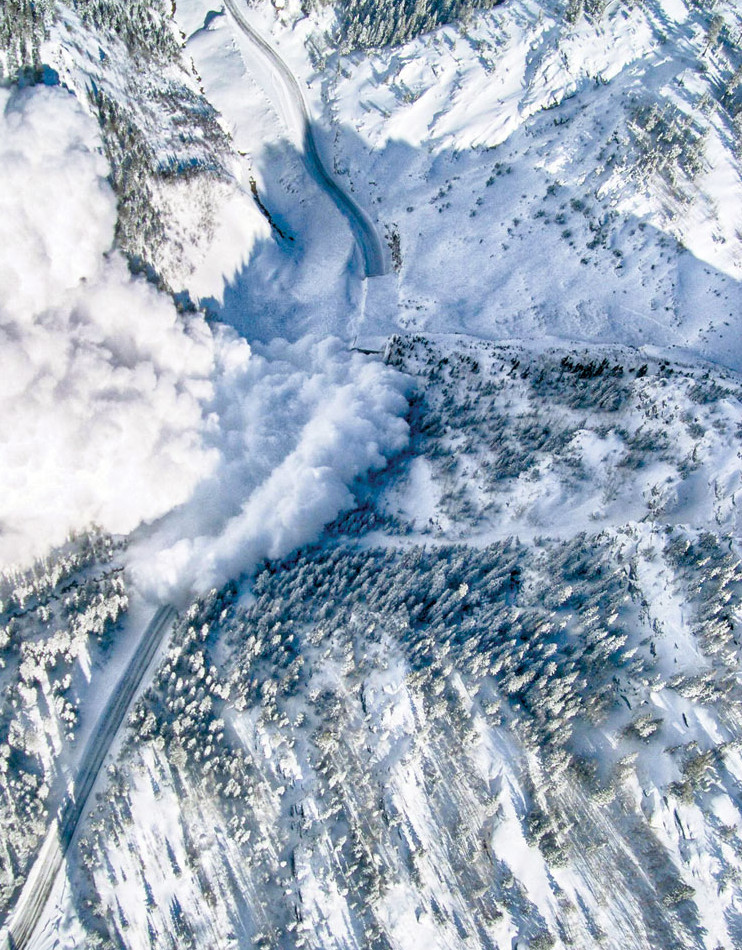 What’s the biggest natural hazard in Colorado? Hint: It’s not tornados, wildfires or floods. It’s avalanches. These snowy debris flows can crush 18-wheelers, whisk away houses and trees like tumbleweeds, and generally wreak havoc on anything in their path.
What’s the biggest natural hazard in Colorado? Hint: It’s not tornados, wildfires or floods. It’s avalanches. These snowy debris flows can crush 18-wheelers, whisk away houses and trees like tumbleweeds, and generally wreak havoc on anything in their path.
First, the bad news: Injuries and deaths from such avalanches have increased nationwide, and Colorado leads the nation in such incidents—by a large margin. Most of the victims are backcountry skiers, boarders and snowmobilers.
The good news? Millions of us travel through and under well-worn Colorado avalanche paths every year. And in nearly 25 years, none of us have been killed as a result.
In part, this is because most of us enter and leave avalanche danger zones while driving on Colorado highways. And, the highways are relatively safe because they and our snow are studied and maintained by a team of snow scientists, engineers and, for lack of a better word, snow-wranglers.

An aerial view of the 2008 “West Riverside” avalanche path across Highway 550 in the San Juan Mountains, Colo. Photo by avalanche forecaster Jerry Roberts.
Together with our unique weather, our snowpack’s idiosyncrasies are key to understanding our avalanche hazards. Winter’s coldest storms tend to deposit layers of light, fluffy snow. In contrast, during warmer or windier storms, heavier snow layers are deposited. Alternation of these conditions leads to a snowpack that’s layered like tiramisu. Planes of weakness exist between the snowpack’s layers that permit football-field-sized slabs of snow to slide downhill. This typically happens when a strong, dense layer of snow forms above a horizon of weak sugary snow. Loose snow avalanches can also occur, most commonly in powdery spring snowpacks when the snow cascades downhill like sand rumbling down a dune.
For an avalanche to form, a bunch of snow has to build up on a relatively steep slope, and an instability or weakness in the snow has to be triggered. Triggers can include high winds, addition of lots of new snow, rain atop snow, rapid warming of a snowpack, and human perturbations.
Back in the day, railways, roads and waterways were often blocked by avalanches. Sometimes towns were even destroyed, like when half the town of Twin Lakes (south of Leadville) was flattened by a 1962 avalanche that sloughed off Mt. Elbert.
From the 1950s onward, Colorado’s highway department has worked to keep roads open. The earliest efforts involved closing roads and using a surplus WWII howitzer to shoot at cornices and the tops of snowy slopes to dislodge imminent avalanches. Then they’d clear the snow away and reopen the road.
The watershed moment in Colorado avalanche control occurred decades later—on a highway between Ouray and Durango. There, the road is crisscrossed by as many as eight avalanche slide paths per mile. On March 5, 1992, Colorado Department of Transportation (CDOT) plow-driver Eddie Imel was out clearing the road of snow and was killed in an avalanche. He was the third plow driver killed along that stretch. The incident caused Ouray residents and CDOT to soul-search and reassess.
From that incident was born a partnership between CDOT and the Colorado Avalanche Information Center (CAIC). For decades the CAIC team had been measuring, testing, predicting and educating about avalanches. The public, including many backcountry enthusiasts, used such data to stay safe. After the 1992 Imel incident, CDOT began hiring CAIC to forecast avalanche risks for motorists and its workers. Since then there hasn’t been a single highway avalanche death—even in the snowy gauntlet of the San Juan Mountains.
But how do they prevent these giant snowy landslides? They don’t. They blow ’em up. From helicopters, from howitzers, by cannon and by hand, explosives are detonated at the tops of known avalanche paths to cajole them downhill. Often this occurs in the wee hours, when the highways and slopes can be closed and cleared before most folks roll out of bed.
Colorado uses more explosives for avalanche mitigation than any other state. We even use more explosives on snow than for any other purpose, including mining, construction, and oil-well perforation.
What about the future? Winter Parkers and Berthoud Passers are about to glimpse it. Above the slide-prone U.S. 40, CDOT will soon install a new type of mountaintop avalanche prevention system, which uses blasts of compressed air to regularly destabilize the snowpack in problem areas. By regularly triggering many mini-avalanches, they’re hoping to prevent avalanche-prone areas from building up thick sheets of snow. The idea is to improve worker, driver and skier safety all in one swoop, while minimizing the need to haul around howitzers and drop turkey-shaped bombs out of helicopters.
So next time we’re creeping through the Idaho Springs or Eisenhower-Johnson bottlenecks, perhaps we ought to imagine what the good ol’ days were like—when the roads were often impassible, not to mention quite dangerous.
James Hagadorn, Ph.D., is a scientist at the Denver Museum of Nature & Science. Suggestions and comments welcome at jwhagadorn@dmns.org.



0 Comments